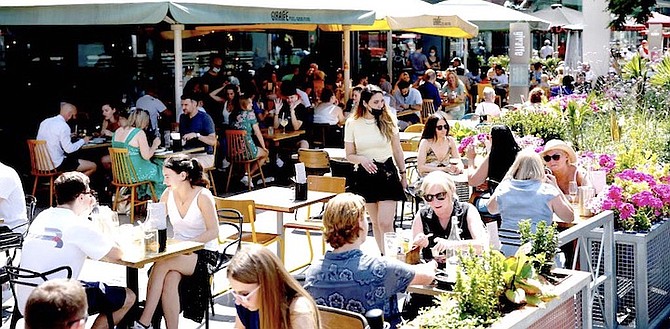ACTIVTRADES WEEKLY
By RICARDO EVANGELISTA
www.activtrades.bs
MUCH has been said about the recent escalation in consumer prices, which some see as the result of the economic boom and logistical issues arising in the aftermath of the pandemic, likely to soon start fizzling out. However, others view the situation as something more serious that is likely to linger on for years.
Defenders of the transitory nature of the current inflationary pressures insist it results from temporary problems in the global supply chains, caused by the pandemic, as well as by pent up demand, as lockdowns come to an end. It has also been said the rise in prices of agricultural raw materials is the consequence of an unusual combination of the aforementioned logistical issues, plus spells of freak weather which damaged harvests of products such as wheat, sugar and coffee.
Technology is also used to defend the transient nature of the current inflation, given the sector’s drive for innovation, which normally leads to a reduction in production and distribution costs. One final argument points at the current high levels of sovereign and corporate debt; normally such scenario leads to a drop in inflation, due to the diversion of capital from investment and consumption into servicing the debt.
Curiously, debt levels, which indeed are extremely high, with several countries facing ratios exceeding 100 percent of GDP, are also used by those who argue that inflation is more than just a transitory issue. Their point is high inflation may be used to mitigate debt burdens, because it leads to the devaluation of currency, helping to shrink the size of liabilities. This, some say, provides extra motivation for governments and central banks to maintain high levels of stimulus running for as long as possible.
Another poignant argument is that globalisation, as we’ve known it since the 1990s, is over. China is increasingly seen as a threat by the west, leading to efforts to repatriate supply chains, which will translate into higher production outlays. One final point is linked to rising energy costs: the fall in demand for fuel during the first few months of the pandemic, which drove a dramatic drop in prices, is having a perverse effect on the current cost of oil. As demand returned to pre-pandemic levels, production didn’t keep up due to the closing down of explorations that were rendered economically unviable by the pandemic. It is also pointed out stimulus programmes designed to kick-start the economy will, to a large extent, rely on infrastructure projects, which will drive demand for fossil fuels, keeping them expensive over the next few years.
There are valid reasons presented by both camps in the defence of their stance. Overall, one can say inflation has probably already peaked in the US, at 5.4 percent; it may soon reach similar levels in Europe and elsewhere but shouldn’t rise much higher. It may also be reasonable to assume the spike in prices is unlikely to be followed, in the short-to-medium term, by a return to pre-pandemic levels; would such scenario even be desirable? Probably not.






Comments
Use the comment form below to begin a discussion about this content.
Sign in to comment
Or login with:
OpenID